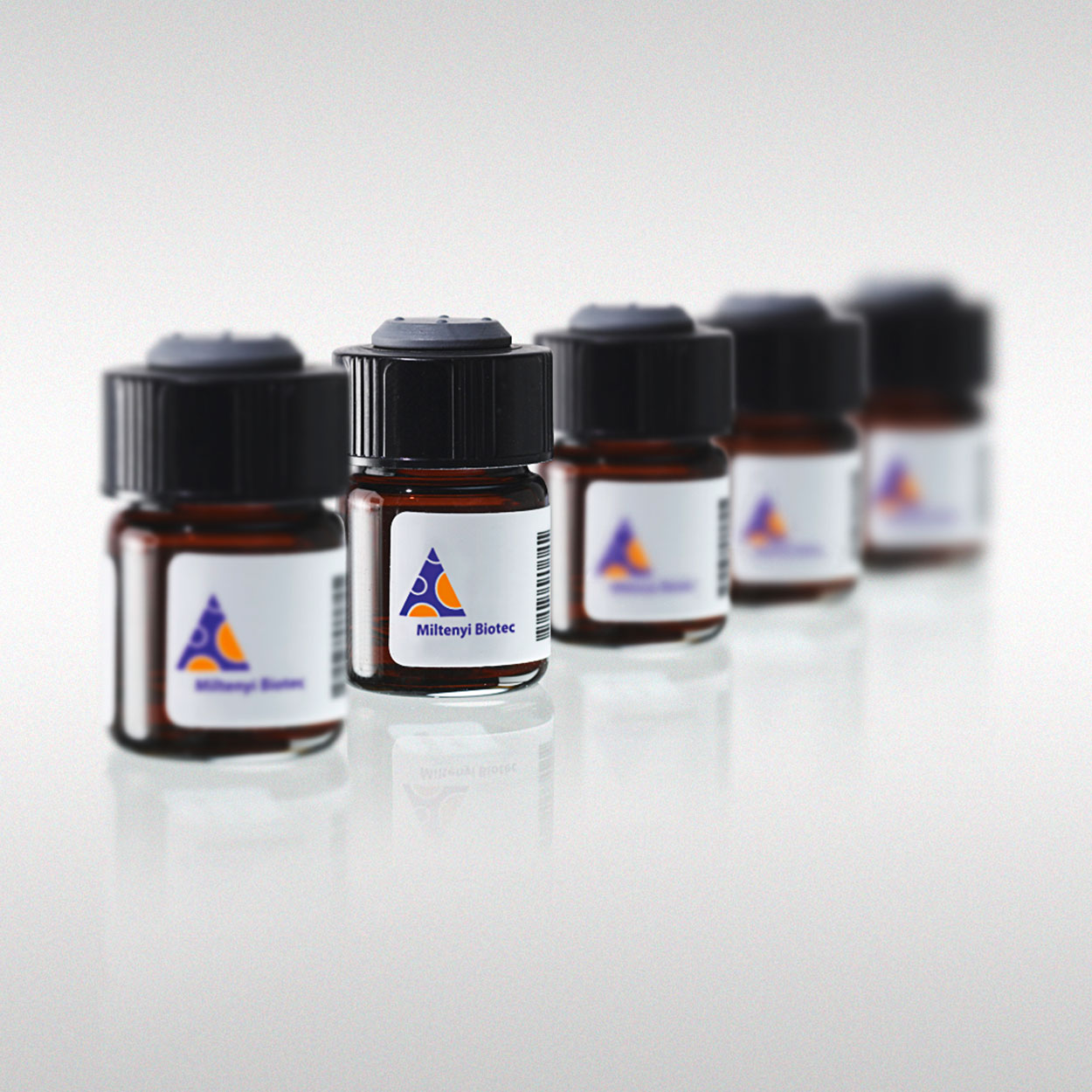Microbeads
CD105 MicroBeads, human
CD105 MicroBeads were developed for the isolation of CD105+ endothelial cells from single-cell suspensions of endothelial tissues, as well as for the isolation of mesenchymal stromal cells (MSCs) from bone marrow aspirate. CD105 MicroBeads can, for example, be used for the isolation of endothelial cells from: umbilical cord veins, arterial vessels1, tumors2, cultures of endothelial cells that are derived from synovial tissue.
Quantity
Overview
CD105 MicroBeads were developed for the isolation of CD105
+
endothelial cells from single-cell suspensions of endothelial tissues, as well as for the isolation of mesenchymal stromal cells (MSCs) from bone marrow aspirate. CD105 MicroBeads can, for example, be used for the isolation of endothelial cells from:
- umbilical cord veins,
- arterial vessels,
- tumors,
- cultures of endothelial cells that are derived from synovial tissue.
Detailed product information
Background information
The CD105 antigen (endoglin) serves as a receptor for the growth and differentiation factors TGF-β
1
and TGF-β
3
, and is expressed on mature endothelial cells, on MSCs with mesodermal differentiation capacity, and on some leukemic cells of B lymphoid and myeloid origin. The CD105 MicroBeads recognize the same molecular antigen as anti-SH2 antibodies-the most commonly employed antigen for the definition of cultivated MSCs.
Downstream applications
CD105 MicroBeads can be used for studies on mesengenesis and for
in vitro
investigations on hematological disorders.
CD105
+
bone marrow cells also show multipotent differentiation
in vitro
and the capacity to form bone
in vivo
without prior cultivation or differentiation
.
Columns
MS, LS, XS, or autoMACS
®
Columns.
